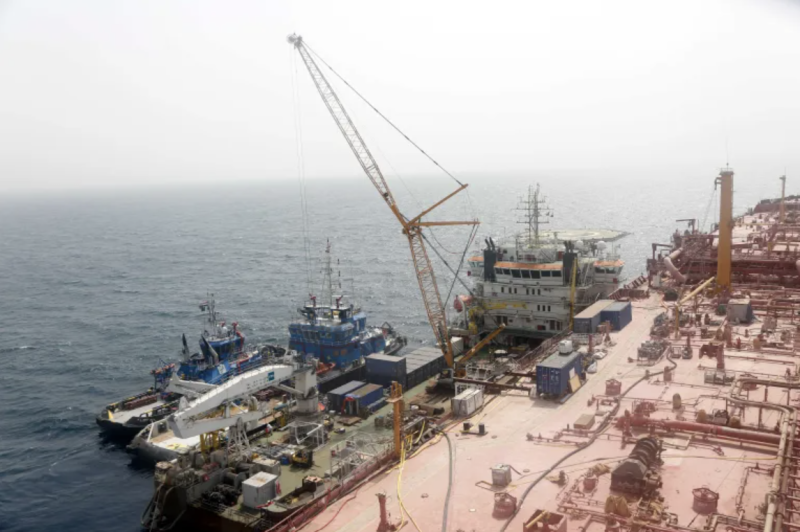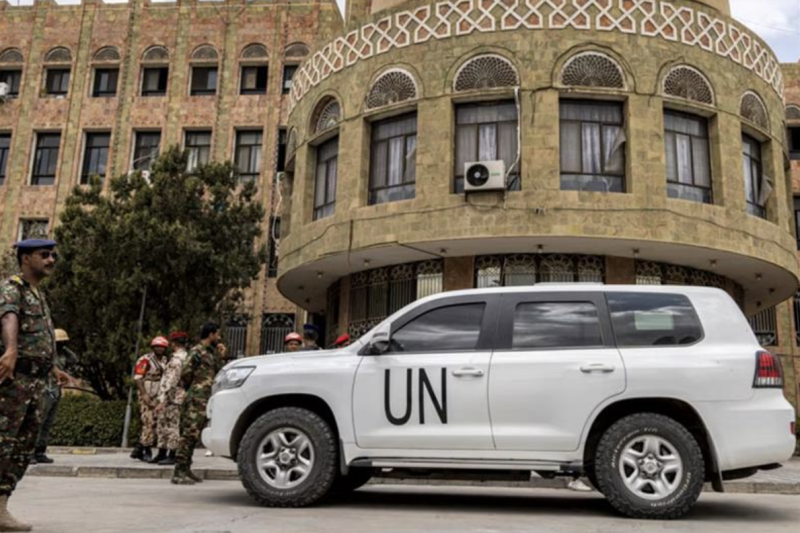How the UN ended up rescuing a stranded vessel in the Red Sea


A 47-year-old tanker rusting off the Yemeni coast in the Red Sea is the scene of a delicate UN-led operation to transfer a million barrels of crude and avoid the fifth largest oil spill in history.
After two years of fund-raising, the pumping of oil by a UN salvage team from the FSO Safer to a replacement vessel the Yemen began on 25 July. The next 19 days will be critical. The decaying Safer continues to pose an environmental threat, the UN is warning.
How did the tanker end up off the Yemen coast?
The Safer was built as a supertanker in 1976 and converted a decade later into what is in effect a floating oil container.
This ship is anchored around 4.8 nautical miles off the coast of Al Hudaydah Governorate in Yemen and contains an estimated 1.14 million barrels of light crude.
The operations of the tanker were suspended in 2015 because of the conflict between Houthi rebels and a pro-Government coalition in Yemen – and the structural integrity of the tanker deteriorated.
The systems needed to pump inert gas into the tanker stopped working in 2017 and the tanker was deemed to be beyond repair.
War-torn Yemen has no capacity or ability to deal with the impact of a massive oil spill, endangering the entire marine ecosystem and economy of the Red Sea – an area that is home to key shipping lanes.
What is the potential environmental threat?
Even after the transfer, the dilapidated Safer tanker will continue to pose an environmental threat resulting from the sticky oil residue inside the tank, especially since the tanker remains vulnerable to breaking apart.
A massive oil spill would devastate fishing communities on Yemen's Red Sea coast wiping out 200,000 livelihoods and endangering millions who would be exposed to life-threatening toxins.
The nearby ports of Al Hudaydah and Saleef - two key outlets for food, fuel and life-saving supplies in a country where 17 million people need food assistance.
The environmental impact on the waters, coral reefs, mangroves and diverse marine life would be severe. The oil spill could reach the shores of Saudi Arabia, Eritrea, Djibouti and Somalia. Desalination plants on the Red Sea coast could also be shut down, cutting off fresh water sources for millions of people.
Any leakage would pollute the air on a large scale. It is also possible that the vital navigation traffic through the Bab al-Mandab Strait to the Suez Canal could be disrupted for a long time, which will cause billions of dollars in losses per day. Tourism would also suffer.
What does this all cost?
If the vessel were to break apart with the oil onboard, the disaster could cost around $20 billion to clean up.
UN Member States, the private sector and the public have so far crowdfunded $121 million in contributions and pledges. The Government of Yemen in Aden supported the initiative with a $5 million donation last year.
The UN is now counting on more generous support to finish this critical task without delay. To finish the job, $22 million is urgently needed - including a $20 million repayment of internal financing provided by the UN Central Emergency Response Fund (CERF) which has provided sufficient liquidity to begin the operation.
How did the UN kick-start this?
The UN Resident and Humanitarian Coordinator for Yemen, David Gressly, launched a new initiative in mid-2021 aimed at private sector partners following failed earlier attempts to launch a plan.
Praising the project’s cross-UN collaboration, Secretary-General Antonio Guterres highlighted the "relentless political work” that the operation entailed “in a country devastated by eight years of war.”
The initiative set out to select a leading company in the field of marine salvage
But the UN Chief noted that this was just a “milestone in the journey,” as the next step involves securing the replacement vessel to a specialized safety buoy.
---
The UN Development Programme (UNDP) is implementing the project, which includes several different steps in the weeks and months ahead.

Hodaiedah -- The Directorate General of Shipping has announced that all 11 vessels stranded at Ras Isa Port in Yemen, which collectively carried ov…

Sana’a – The United Nations has strongly condemned the detention of ten additional UN staff members by Houthi forces on December 18, de…

Marib -- Yemen’s Shield of the Nation Forces announced that they successfully thwarted an attempt to plant improvised explosive devices (IEDs…